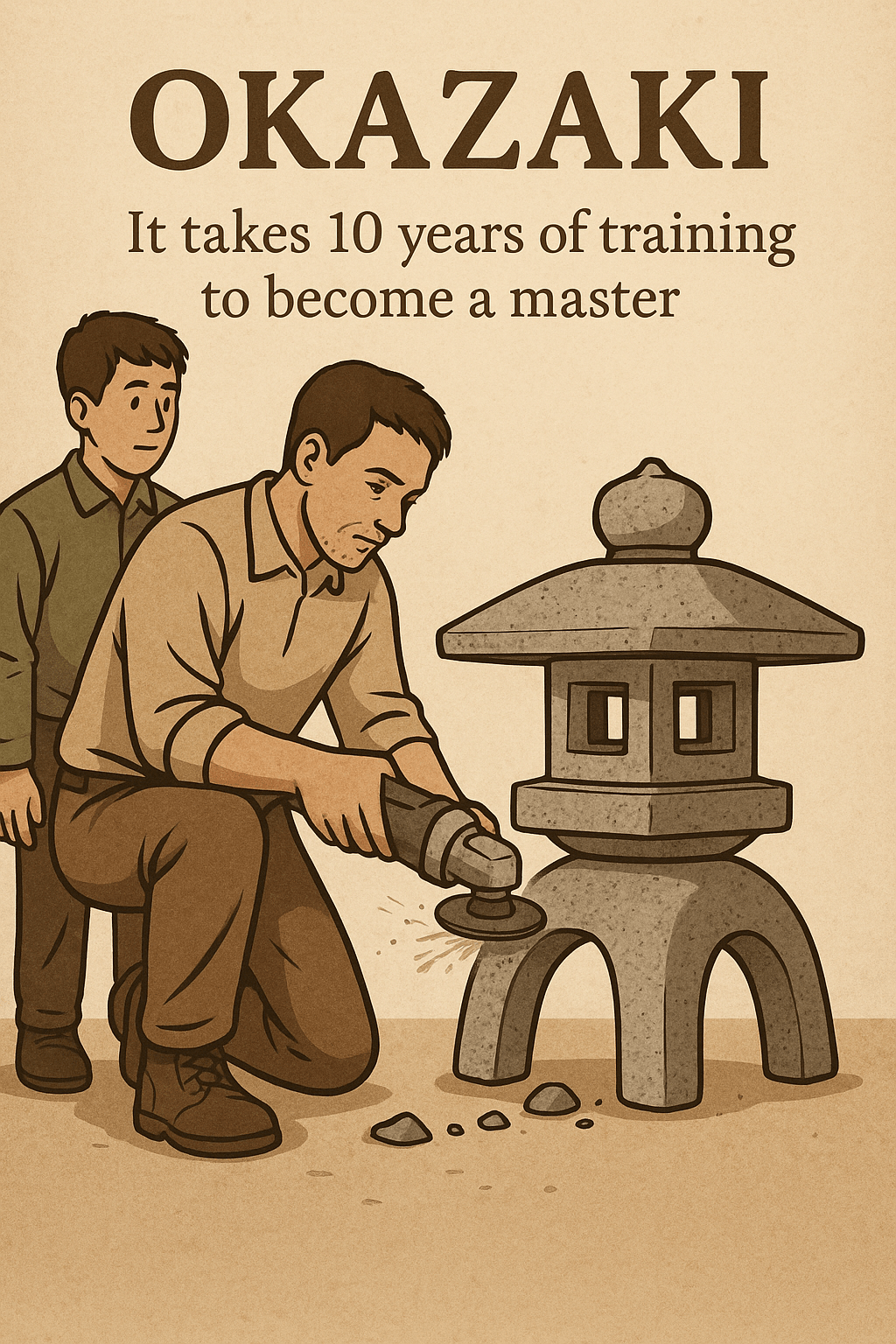
Okazaki Stonemasons: Mastering the Craft Through 10 Years of Apprenticeship
Share
Okazaki Stonemasons: Mastering the Craft Through 10 Years of Apprenticeship
A Culture of Inheriting Skills Rooted in Okazaki
Okazaki in Aichi Prefecture is one of Japan’s leading stonecraft centers. Stone lanterns, guardian dogs (komainu), five-ring pagodas, and water basins—these traditional stoneworks have been passed down for generations by local artisans. Supporting this tradition is an age-old system known as the apprenticeship system.
What is the Apprenticeship System?
An apprenticeship is a professional training system where a young person trains under a master craftsman (oyakata) for many years, learning not only skills but also discipline. In Okazaki, this system has been rooted since the Edo period and still functions today as a living tradition in the world of artisanship.
The Structure of the Okazaki Apprenticeship
- Beginner (1–2 years): Learns tool names, maintenance, and site etiquette. Mainly responsible for cleaning and observation.
- Junior Assistant (3–5 years): Assists senior craftsmen, performs simple tasks, and starts basic carving practice.
- Half-skilled (5–7 years): Takes partial responsibility for crafting lanterns or komainu, begins to use personal tools.
- Fully Skilled (10+ years): Completes all processes alone and produces branded, signature-quality works.
- Master (Oyakata): Takes on apprentices and runs an independent workshop. Handles orders for shrines and international clients.
Tradition Beyond Bloodlines
One distinctive feature of Okazaki is that apprenticeship is not limited to family succession. Anyone with passion for stone can enter the path. Many young people from other regions have come to Okazaki to live and train. In recent years, it has become common for sons of stone shop owners from across Japan to come train in Okazaki before taking over their family business. They return home with skills and spirit learned here and become key figures in the future of stonecraft nationwide. Okazaki is now a trusted training ground for aspiring artisans throughout Japan.
The Philosophy of “Learning by Watching”
In Okazaki, apprentices are rarely taught step-by-step. Instead, they are expected to observe their master’s hands, posture, and breath to learn. It may take years to perceive subtle techniques that differ by mere millimeters. This method reflects a deep, intuitive transmission of knowledge.
Modern Challenges and Young Aspirants
Today, younger generations are often hesitant to enter the field due to the image of hard, dirty, or dangerous work. Yet there are still those who choose Okazaki because they want to create something with their hands and dedicate their life to craftsmanship.
At JapanStones.shop, we feature the works of these young craftsmen. It’s not just technique, but their dedication to legacy that keeps Okazaki’s stone culture alive.
Conclusion — Inheriting More Than Just Technique
The Okazaki apprenticeship system is not merely job training. It is a human development culture that accepts, shapes, and sends forth individuals with the resolve to face stone.
It’s not about bloodline or academic background—only the will to work with stone opens the door to this world.
Carve stone that will last a hundred years—with your own hands.
That is the spirit of Okazaki’s stonemasons, and the tradition JapanStones.shop aims to share with the world.
